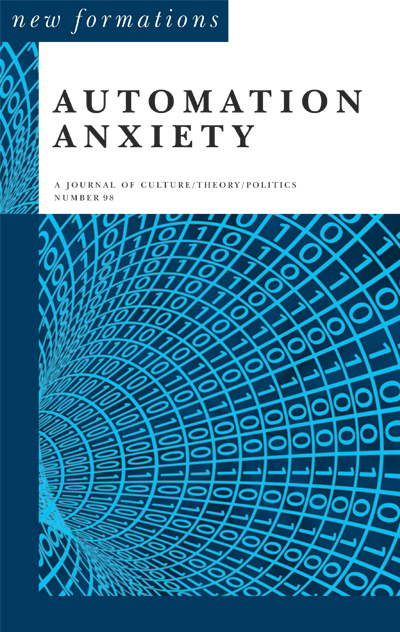
Distraction Machines? Augmentation, Automation and Attention in a Computational Age
New Formations - ISSN 0950-2378
Volume 2019 Number 98
Distraction Machines? Augmentation, Automation and Attention in a Computational Age
M. Beatrice Fazi pages -
DOI: 10.3898/NEWF:98.06.2019
Abstract
It is often argued (and feared) that the human capacity to pay attention is being transformed by computational technologies. Are computing machines distraction machines? This article takes this question as its starting point in order to address concerns about attention deficits vis-à-vis questions and issues about the mechanisation of cognitive procedures. I will claim that, when approaching the attention ecology of the twenty-first century, it is necessary to differentiate between augmentation and automation. While augmentation implies the extension of predefined forms or modes of behaviour, contemporary developments in computational automation ask us instead to consider the possibility of moving beyond phenomenological analogies. The article will thus discuss how transformations in the capacity to pay attention in a computational age need to be analysed in relation to the emergence of quasi-autonomous artificial cognitive agents driven by AI technologies, such as those known as machine learning. I will argue that these artificial cognitive agents can no longer be described in terms of technological add-ons to pre-existing human cognitive capacities. Today, we think alongside machines that are, is a sense, already thinking. Similarly, we pay attention alongside machines that are, in a sense, already paying attention. The challenge for philosophy and cultural theory is that of moving beyond ‘projectionist’ conceptions of such technological agency. This challenge, however, also involves overcoming the anthropomorphism that is implicit in expression such as ‘thinking machines’. In a century where robot-to-robot communications have outpaced and outnumbered human-machine interactions, these artificial cognitive agents are not just reframing the human capacity to pay attention: they are also re-structuring the conditions for such capacity. Addressing the conditions for attention beyond augmentation and vis-à-vis computational automation involves considering the role and scope of both human and algorithmic decision-making, and engaging with the ways in which the humanities can intervene upon contemporary complex cognitive scenarios.
SORRY - you are not registered as being permitted online access to the full text of this article
You have the following options:
- If you are viewing this via an institution or academic library you can ask that your institution takes out a Subscription to this journal.
- If you already have a Personal Subscription please login below
Forgotten your username / password? Click here to locate
- Purchase an annual Personal Subscription
PRINT + DIGITAL personal subscription (£45 / year)
DIGITAL personal subscription (£30 / year)
A Personal Subscription provides immediate access not only to the single article you are seeking, but also to all past and future articles in this journal up to the expiry of your annual (calendar year) subscription. - Purchase immediate access to this single article (UK£7.00) - Buy article Coming Soon
To cite this article
M. Beatrice Fazi (2019) Distraction Machines? Augmentation, Automation and Attention in a Computational Age, New Formations, 2019(98), -. https://doi.org/10.3898/NEWF:98.06.2019
